Mastering the Dragon: A Professional’s Guide to Crypto Leverage Trading and Risk Management
Have you ever wondered how some traders seem to amplify their cryptocurrency gains exponentially, even with relatively small capital? The answer often lies in leverage trading, a powerful tool that can multiply both profits and losses in the volatile crypto market. While the prospect of magnified returns is enticing, understanding how to effectively trade cryptocurrency with leverage and, more importantly, how to manage its inherent risks, is crucial. This comprehensive guide will demystify the core mechanics of leverage, explore advanced strategies, detail essential risk management protocols, and highlight the cutting-edge tools and platforms that enable disciplined traders to navigate this high-stakes environment.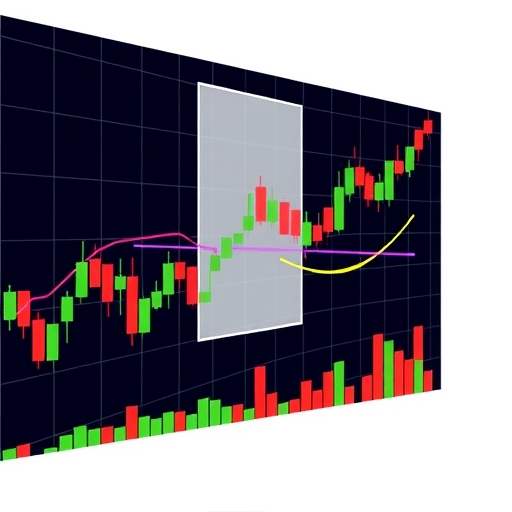
The Core Mechanics: Understanding Leverage, Margin, and Liquidation
When you decide to trade cryptocurrency with leverage, you’re essentially borrowing funds to open a larger position than your own capital would typically allow. Think of it like using a small amount of your own money (your collateral) to control a much more valuable asset. This concept is fundamental to understanding how amplified gains, and equally amplified losses, occur.
- Leverage Ratios: These are expressed as multipliers, such as 10x, 50x, 100x, or even up to 500x on some platforms. A 10x leverage means that for every $1 of your own capital (margin), you can control $10 worth of cryptocurrency. If you put down $100 and use 100x leverage, you can control a $10,000 position. This significantly amplifies your exposure to price movements.
- Margin: This is your initial capital, the “skin in the game” you deposit as collateral to open and maintain a leveraged position. It’s the buffer against losses.
- Maintenance Margin: This is the minimum equity level your position must hold to stay open. If your trade goes against you and your position’s value drops below this level, it triggers a warning or, more critically, a liquidation.
- Liquidation: This is perhaps the most critical term for any trader using leverage. When your losses cause your margin to fall below the maintenance margin, the exchange automatically and forcibly closes your position. This typically results in the complete loss of your initial margin investment. Understanding your liquidation price is paramount.
Beyond these basics, we also encounter different types of margin and trading directions:
- Cross vs. Isolated Margin:
- Cross Margin uses your entire account balance as collateral for all your open positions. While it offers more flexibility and can help prevent individual positions from being liquidated quickly, it also means a single bad trade can put your whole account at risk.
- Isolated Margin allocates a specific, separate amount of capital as collateral for each individual trade. This is often recommended for beginners because it limits the risk of any single trade to only the capital you’ve assigned to it, protecting the rest of your account.
- Long vs. Short Trades:
- A Long Position means you buy a cryptocurrency with the expectation that its price will increase. You profit if the price goes up.
- A Short Position means you sell a cryptocurrency (which you’ve borrowed) with the expectation that its price will decrease. You profit if the price goes down. Both types of trades can be amplified by leverage.
- Spot vs. Derivatives Trading: Leverage is primarily used in derivatives markets, such as futures contracts, perpetual swaps, and options. In contrast, spot trading involves buying or selling the actual cryptocurrency for immediate delivery, without leverage. When you trade cryptocurrency with leverage, you’re almost always engaging with derivatives.
- Funding Rates: These are periodic fees exchanged between long and short position holders in perpetual swap contracts. They help keep the contract price close to the spot price. Funding rates can be an implicit cost of holding leveraged positions over time, and smart traders incorporate them into their strategy.
Understanding these foundational concepts is crucial for making informed decisions. Many new traders often overlook the subtle but significant differences between margin types, which can lead to unexpected outcomes. It is vital to consider your risk tolerance and strategy before choosing between cross and isolated margin.
- Cross Margin: Uses your entire available balance to prevent liquidation of any single position, meaning one losing trade could deplete your whole account.
- Isolated Margin: Limits the risk of a single trade to the specific margin allocated for that position, protecting the rest of your funds.
- Long Position: Bet on price increase; buy low, sell high.
- Short Position: Bet on price decrease; sell high, buy low.
To further illustrate the differences between these critical margin types, consider the following comparison:
| Feature | Cross Margin | Isolated Margin |
|---|---|---|
| Risk Scope | Whole account balance | Specific amount allocated per position |
| Liquidation | Higher threshold, but risks entire balance | Lower threshold, but only risks allocated margin |
| Flexibility | More flexible, can use profits from one trade to support another | Less flexible, each position stands alone |
| Recommended For | Experienced traders with strong conviction and hedging strategies | Beginners and those wanting to limit risk per trade |
Advanced Strategies for Amplified Returns and Risk Mitigation
While the allure of high leverage can be strong, professional traders don’t just blindly apply maximum multipliers. Instead, they use sophisticated strategies to amplify returns while diligently managing risk. These tactics go beyond simple long or short positions, incorporating dynamic adjustments and hedging techniques.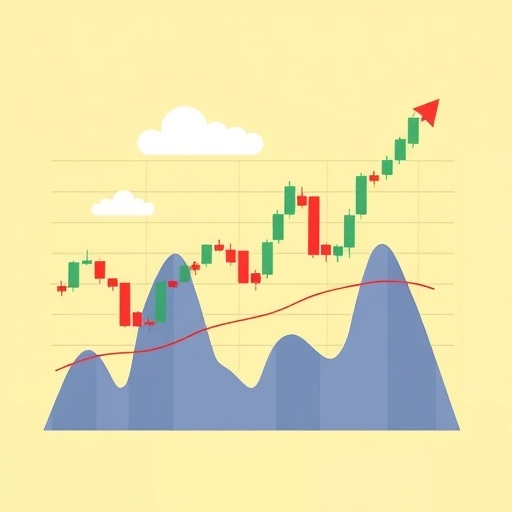
- Pyramiding (Scaling In): This strategy involves gradually adding to a winning position as a trend confirms itself. Instead of going “all-in” at once, you start with a smaller leveraged position. If the market moves favorably, you add more capital, increasing your exposure only when the trade is already showing profit. This compounds returns while containing initial risk.
- Laddering Out (Scaling Out): Just as you might scale into a trade, you can also scale out. This means taking partial profits at predetermined price levels. For example, if you have a large long position, you might sell 25% of it at your first profit target, another 25% at a higher level, and so on. This locks in gains and reduces the risk of giving back all your profits if the market suddenly reverses.
- Hedging Pair Trades: This advanced technique mitigates risk by taking opposite leveraged positions on correlated assets. For instance, you might “long” (buy with leverage) a specific altcoin while “shorting” (selling with leverage) Bitcoin futures. The idea is that if the overall crypto market experiences a downturn, your short Bitcoin position might cushion the losses from your altcoin long, reducing your overall drawdown.
- Trend Riding with Trailing Techniques: Capturing large portions of a market trend requires dynamic risk management. Traders often use trailing stop-loss orders, which automatically adjust your stop-loss level as the price moves in your favor. If the price rises, your stop-loss rises with it, securing more profit. If the price reverses, the trailing stop triggers, locking in gains.
- Volatility Breakout Strategies: When a cryptocurrency’s price breaks out of a tight trading range with high volume, it can signal the start of a strong trend. Advanced traders employ leverage during these breakouts to capitalize on rapid price movements. However, this strategy demands strict risk controls to manage the risk of false signals or “fakeouts.”
- Leveraged Diversification: Instead of concentrating high leverage on a single, highly volatile token, some traders spread moderate leverage across a basket of uncorrelated crypto assets or trading strategies. This approach aims to diversify risk, reducing the impact of a sudden adverse movement in any one asset, while still seeking amplified returns across the portfolio.
These strategies illustrate that effectively using leverage isn’t about maximizing the multiplier, but about strategically deploying it to enhance returns within a carefully considered risk framework. When you trade cryptocurrency with leverage using these methods, you’re approaching the market with a professional mindset.
Applying these strategies effectively requires not just understanding the theory, but also diligent practice and continuous market analysis. Professional traders often spend countless hours backtesting and refining their approaches to ensure they align with their risk appetite and market conditions.
- Focus on Trend Confirmation: Avoid entering trades solely based on initial price movements; wait for confirmation.
- Utilize Multiple Timeframes: Analyze charts across different timeframes (e.g., 1-hour, 4-hour, daily) for a holistic view.
- Practice with Demo Accounts: Before using real capital, test strategies on a demo account to build confidence and refine execution.
Fortifying Your Capital: Comprehensive Risk Management Protocols
In the high-stakes world of leveraged crypto trading, where market volatility can be extreme, capital preservation is not just important—it’s paramount. Without robust risk management, even a few bad trades can quickly wipe out your entire trading account. We cannot stress enough how vital these protocols are for anyone who aims to trade cryptocurrency with leverage successfully.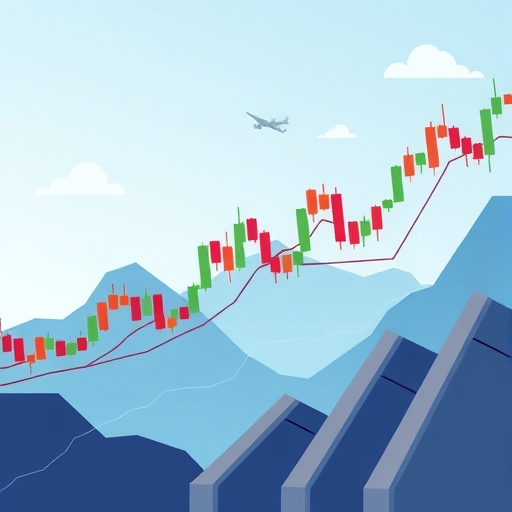
- Position Sizing: This is arguably the most fundamental risk management tool. It means limiting the amount of capital you risk on any single trade to a small percentage of your total trading capital, typically 1-2%. For example, if you have a $10,000 account, you should not risk more than $100-$200 on one trade. This prevents a single disastrous trade from wiping out a significant portion of your funds.
- Stop-Loss and Take-Profit Orders: These are mandatory tools.
- A Stop-Loss Order automatically closes your position when the price reaches a predefined maximum acceptable loss level. It’s your safety net.
- A Take-Profit Order automatically closes your position when the price reaches your desired profit target, helping you lock in gains and avoid greed.
Using both ensures you define your maximum risk and desired reward before entering a trade.
- Liquidation Price Awareness: Always, always know your exact liquidation price before opening a leveraged position. Many platforms display this clearly. Understanding this critical point allows you to set your stop-loss well before liquidation is triggered, giving you more control over your losses.
- Diversification and Correlation Controls: While diversifying across different cryptocurrencies is a good start, it’s also important to consider their correlation. Holding many assets that tend to move in the same direction (e.g., many altcoins often follow Bitcoin) doesn’t truly diversify risk. Smart traders look for uncorrelated assets or strategies and avoid over-leveraging highly correlated cryptocurrencies to reduce portfolio risk.
- Understanding Funding Rates and Rollover Costs: For perpetual futures contracts, funding rates are an ongoing cost or benefit. Ignoring them can erode your profits, especially for long-term leveraged positions. Always factor these into your overall trading strategy.
- Stress-Testing with “What-If” Scenarios: Experienced traders often simulate extreme market conditions to see how their strategies would perform. This might involve backtesting against historical data or simply asking, “What if Bitcoin drops 20% in an hour?” This helps assess the resilience of your strategy.
- Psychological Discipline: This is perhaps the hardest but most crucial aspect. The emotional rollercoaster of crypto markets can lead to impulsive decisions like “revenge trading” (trying to recover losses quickly) or FOMO (Fear of Missing Out), which often result in further losses. Adhering to predefined trading rules, taking breaks, and managing your emotions are vital for sustained success.
By implementing these comprehensive risk management protocols, you transform the high-risk endeavor of leveraged crypto trading into a calculated pursuit. It’s the hallmark of a professional approach to the market.
Effective risk management is not a one-time setup but an ongoing process of monitoring, adjusting, and adhering to your rules. It’s the bedrock upon which consistent profitability is built in leveraged trading.
- Review Trades Regularly: Analyze both winning and losing trades to identify patterns and areas for improvement.
- Adjust Position Size: Modify your position size based on market volatility and confidence in the trade setup.
- Stay Updated on Market News: Economic and crypto-specific news can dramatically impact prices, requiring quick adjustments to risk parameters.
To summarize the essential components of a robust risk management framework, consider the following tools and their primary functions:
| Tool | Purpose | Benefit |
|---|---|---|
| Position Sizing | Limits capital risked per trade (e.g., 1-2%). | Prevents catastrophic losses from single trades. |
| Stop-Loss Orders | Automates closing a losing position at a set price. | Defines maximum loss, protects capital. |
| Take-Profit Orders | Automates closing a winning position at a set price. | Secures gains, prevents emotional overholding. |
| Liquidation Price Awareness | Knowing the price at which your position will be force-closed. | Allows proactive risk mitigation before total loss. |
| Diversification | Spreading risk across multiple assets/strategies. | Reduces impact of adverse movements in one asset. |
Precision Execution: Navigating Volatile Markets with Strategic Orders and Tools
Even the most brilliant trading strategy, backed by solid risk management, can falter without precise execution, especially in the fast-paced, volatile world of cryptocurrencies. How you enter and exit your trades can significantly impact your profitability when you trade cryptocurrency with leverage.
- Choosing the Right Order Types:
- Limit Orders allow you to specify the exact price at which you want to buy or sell. They are generally preferred in volatile conditions because they minimize slippage (the difference between your expected price and the actual execution price).
- Market Orders execute immediately at the best available price. While convenient, they can lead to significant slippage in fast-moving markets, potentially costing you more than anticipated on a leveraged position.
- Trailing Stop Orders are dynamic stop-loss orders that adjust automatically as the price moves in your favor, helping to lock in more profit.
- Time and Size Your Trades (TWAP and Iceberg Orders): For larger positions, simply placing a single market order can move the market against you, leading to worse execution.
- Time-Weighted Average Price (TWAP) orders break large orders into smaller, spaced-out components over a set period to reduce market impact.
- Iceberg Orders are large orders that are split into smaller visible limit orders, with the rest of the order remaining hidden. As each small visible order is filled, another portion of the hidden order appears. This helps traders execute large trades without revealing their full intentions and attracting undue attention from other market participants.
- Volume and Liquidity Awareness: Always monitor depth charts and real-time liquidity heatmaps. These tools show you the current buy and sell orders at various price levels. Trading during periods of low liquidity can lead to significant slippage and make it harder to enter or exit large positions without moving the market. Adjust your trade sizes accordingly, especially in less liquid altcoins.
- Judicious Use of Technical Indicators: While indicators like Bollinger Bands, Volume-Weighted Average Price (VWAP), Average True Range (ATR), Relative Strength Index (RSI), and Moving Average Convergence Divergence (MACD can be helpful, rely more on price action for entry and exit signals. Faster indicators, when combined with your understanding of current market dynamics, can provide better signals than lagging indicators alone.
- Selective Herd Following: Observing volume surges and social sentiment can provide insights into market momentum. However, exercise caution. While following the “herd” can be profitable in strong trends, independent analysis is crucial to avoid being trapped by sudden market reversals, especially when using leverage.
- High-Frequency Signals and News Filters: In rapidly changing markets, staying informed is key. Utilizing algorithmic alerts and reliable news feeds allows you to react swiftly and make informed decisions in response to significant market events, rather than lagging behind.
- Backtest and Adjust on the Fly: Continuously analyze your past trades and market behavior. What worked? What didn’t? Refine your execution strategies based on this feedback and adapt to evolving market patterns. The crypto market is dynamic, and your approach must be too.
Mastering these execution techniques elevates your trading from speculative gambling to a precise, tactical operation. When you trade cryptocurrency with leverage, precision in execution is often the differentiator between profit and loss.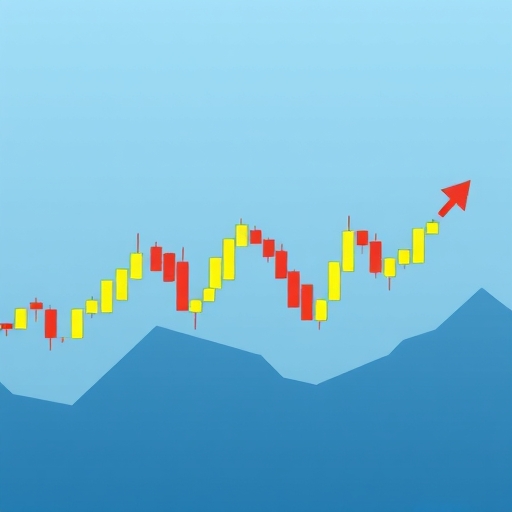
Selecting the correct order type is a critical aspect of effective trade execution, especially in fast-moving markets. Here’s a quick guide to their typical uses:
| Order Type | Description | Best Use Case |
|---|---|---|
| Limit Order | Buys/sells at a specified price or better. | Entering/exiting at desired prices, avoiding slippage. |
| Market Order | Buys/sells immediately at the best available price. | Urgent entry/exit, but risks slippage in volatile markets. |
| Stop-Loss Order | Closes a position when price hits a preset loss level. | Limiting potential losses on a trade. |
| Take-Profit Order | Closes a position when price hits a preset profit level. | Securing gains automatically. |
| Trailing Stop | Stop-loss that adjusts with favorable price movement. | Protecting profits while allowing for further gains. |
Leveraging External Capital: The Role of Prop Trading Firms and Advanced Platforms
As you gain experience and refine your strategies to trade cryptocurrency with leverage, you might look for platforms that offer more advanced features or even access to greater capital. The ecosystem for leveraged crypto trading has evolved, offering a range of tools and opportunities for serious traders.
Leading Exchanges for Leveraged Trading
Top-tier platforms provide not just high leverage options but also diverse order types, advanced charting, and API access, catering to a spectrum of traders from beginners to seasoned professionals. Here’s a brief overview of some prominent players:
| Platform | Max Leverage | Key Features | Regulatory/Security |
|---|---|---|---|
| Binance Futures | Up to 125x | Leading exchange, vast altcoin selection, advanced charting, API access, robust liquidity. | Extensive security measures, global presence (with regional restrictions). |
| Bybit | Up to 100x | User-friendly, advanced order types, strong derivatives focus, copy trading. | Reputable, focuses on user asset security. |
| OKX | Up to 100x | Wide range of derivatives, options trading, advanced trading tools, competitive fees. | Strong security protocols, often used by institutional traders. |
| PrimeXBT | Up to 200x | User-friendly interface, focuses on fundamental concepts & basic risk management, offers demo trading. | Emphasizes security and client privacy. |
| MEXC | Up to 200x | Competitive fees (0% maker for futures), vast altcoin selection, copy/demo trading, basic accounts with smaller withdrawals don’t require KYC. | Global reach, strong asset variety. |
| BTCC | Up to 500x | Established (since 2011), strong security record (zero reported hacks), low transaction fees (0.03%-0.06%), high liquidity, licensed in U.S., Canada, Europe, supports demo/copy trading. | Highly regulated in multiple jurisdictions, strong security. |
Specialized Tools and Opportunities
- Algo Trading and Bots: For traders who can develop or acquire automated systems, trading bots can execute strategies at high speed and without emotional bias. These require careful setup, backtesting, and, crucially, integrated kill switches and loss limits to prevent runaway trades.
- Charting and Analysis Tools: Platforms like TradingView are indispensable, offering custom scripts, real-time alerts, and the ability to integrate on-chain data with traditional technical analysis for a comprehensive market view.
- Crypto Prop Trading Firms (e.g., HyroTrader): For truly experienced and consistently profitable traders, these firms offer access to substantial external capital and infrastructure. They provide high leverage (e.g., 1:100) and profit-sharing models, allowing traders to scale their operations beyond their personal capital. This is a path for those who have proven their expertise.
- Real-Time Data and Connectivity: Direct market feeds, API access, and cross-exchange arbitrage tools provide a critical competitive edge. Speed and the ability to identify opportunities across different platforms instantly become paramount.
- Community and Education Platforms: While valuable for insights and networking, remember that the ultimate responsibility for strategy and risk management lies with you. Always verify information and tailor advice to your own trading plan.
Whether you’re exploring high leverage on a regulated exchange like BTCC or aiming for funded accounts through a prop firm like HyroTrader, the ecosystem provides extensive resources. The key is to match your tools and platforms to your experience level and risk tolerance as you trade cryptocurrency with leverage.
Conclusion
Leveraged cryptocurrency trading, as we’ve explored, is akin to riding a powerful dragon: it can elevate you to extraordinary heights or, without proper control, lead to a swift and painful fall. The true mastery lies not in the sheer amount of leverage you apply, but in the wisdom, discipline, and skill with which you wield this potent financial instrument. Successful traders transform the inherent volatility of the crypto market into a strategic advantage by adopting a multifaceted approach.
They begin by understanding the core mechanics of leverage, margin, and liquidation, treating these concepts not as abstract terms but as critical components of their trading reality. They then layer on advanced strategies like pyramiding into winning trades, laddering out to secure profits, and hedging to mitigate drawdowns, all while continuously adapting to market conditions. Crucially, their foundation is built upon unwavering risk management, including precise position sizing, mandatory use of stop-loss orders, and a deep awareness of liquidation prices. Furthermore, they excel in execution, utilizing strategic order types and advanced tools to navigate volatile markets with precision, often leveraging external capital and automated systems to enhance their edge.
Ultimately, the distinguishing factor between professional traders and those who merely gamble is not the size of the leverage utilized, but the intelligence and discipline applied to every aspect of the trading process. When you choose to trade cryptocurrency with leverage, remember that knowledge, preparation, and emotional control are your most valuable assets.
Disclaimer: This article is for informational and educational purposes only and does not constitute financial advice. Cryptocurrency trading, especially with leverage, involves substantial risk of loss and is not suitable for every investor. You should carefully consider your investment objectives, level of experience, and risk appetite before engaging in any such activity. Seek advice from an independent financial professional if you have any doubts.
Frequently Asked Questions (FAQ)
Q: What is the primary difference between spot trading and leveraged trading in cryptocurrency?
A: Spot trading involves buying or selling the actual cryptocurrency for immediate delivery, without borrowing funds. Leveraged trading, on the other hand, involves borrowing funds to open a larger position than your own capital allows, amplifying both potential profits and losses, and is primarily done through derivatives like futures or perpetual swaps.
Q: How important is a stop-loss order in leveraged crypto trading?
A: A stop-loss order is critically important and arguably mandatory in leveraged crypto trading. It automatically closes your position when the price reaches a predefined maximum acceptable loss level, serving as your essential safety net to prevent disproportionate losses and protect your trading capital from extreme market volatility.
Q: Can beginners effectively use leverage in cryptocurrency trading?
A: While beginners can use leverage, it is generally recommended to start with very low leverage ratios (e.g., 2x-5x) and on isolated margin. A thorough understanding of market mechanics, robust risk management protocols (like position sizing and stop-loss orders), and prior practice on a demo account are essential before engaging in leveraged trading with real capital. High leverage is best reserved for experienced traders.


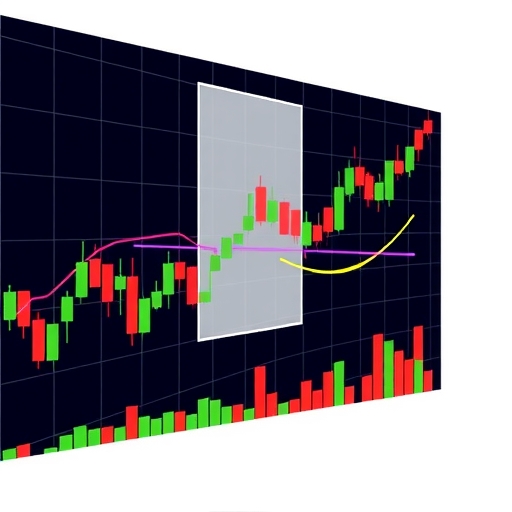
No responses yet